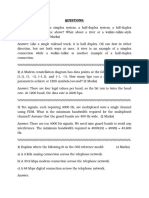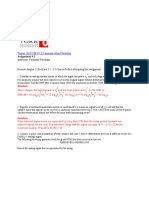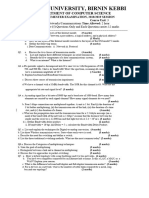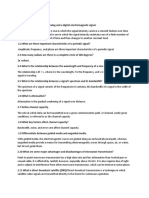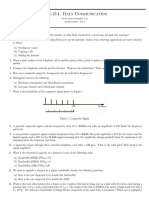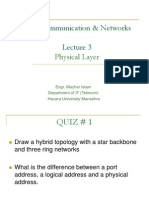0% found this document useful (0 votes)
10 views2 pagesCPE413 - Assignment-1 - 2021
The document outlines an individual assignment for the course CPE413 on Wireless Networks, with a due date of November 12, 2021. It includes a series of technical questions related to signal frequency, channel capacity, digital signaling systems, and modulation techniques. Students are instructed to submit their work in a specific format and are warned against plagiarism.
Uploaded by
Muuhab MahmoudCopyright
© © All Rights Reserved
We take content rights seriously. If you suspect this is your content, claim it here.
Available Formats
Download as PDF, TXT or read online on Scribd
0% found this document useful (0 votes)
10 views2 pagesCPE413 - Assignment-1 - 2021
The document outlines an individual assignment for the course CPE413 on Wireless Networks, with a due date of November 12, 2021. It includes a series of technical questions related to signal frequency, channel capacity, digital signaling systems, and modulation techniques. Students are instructed to submit their work in a specific format and are warned against plagiarism.
Uploaded by
Muuhab MahmoudCopyright
© © All Rights Reserved
We take content rights seriously. If you suspect this is your content, claim it here.
Available Formats
Download as PDF, TXT or read online on Scribd
/ 2


